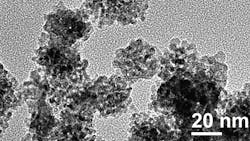Just to be clear, not all rare earth metals are necessarily rare or difficult to obtain and process. Some can be as common as copper, while others have low accessibility or are tough to extract from their natural surroundings. Both types are crucial in everyday technologies, putting the “rarer” rare earths at high demand and low supply.
A main goal of the Critical Materials Institute (CMI), a U.S. Department of Energy Innovation Hub led by Ames Laboratory, is to level out the supply and demand of critical rare earth metals. To accomplish that task, CMI scientists are finding alternatives to these rare earths in technology, researching new recycling methods, and improving the extraction of key rare earths from other substances.
And now, CMI is adding a new approach, with a focus on the common rare earths.
Since common rare earth metals are often picked up when mining for their critical counterparts, scientists at CMI hope to find large-scale uses for them. Such critical rare earth excavations would then have added value in terms of time and money, as well as optimize mining resources.
CMI created a method using cerium, the most common rare earth, to improve the production process of nylon. Everyday appliances, from rope to stockings, are made out of nylon, which makes for a rather wide and diverse industry.
To create nylon, a hydrogenation step is necessary to convert phenol into cyclohexanone. Traditional nylon production requires high temperatures and pressures, as well hydrogen, which can be hard to handle and store, let alone posing safety risks
CMI scientists, along with the department of Chemistry at Iowa State University and Oak Ridge National Laboratory, successfully created a method to catalyze the conversion. It’s performed at ambient pressure and room temperature, and doesn’t require high levels of hydrogen. A cerium-based material called high-surface-area (HSA) ceria is used as a scaffold to palladium, which acts as the catalyst. The HSA ceria platform contains nanometer particles that distribute the catalyst in reduction reactions. The full chemical reaction is detailed in the ACS Catalysis Journal.
About the Author
Leah Scully
Associate Content Producer
Leah Scully is a graduate of The College of New Jersey. She has a BS degree in Biomedical Engineering with a mechanical specialization. Leah is responsible for Machine Design’s news items that cover industry trends, research, and applied science and engineering, along with product galleries. Visit her on Facebook, or view her profile on LinkedIn.
